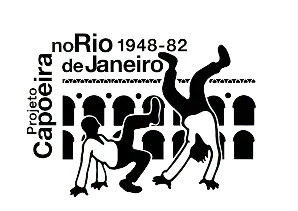By Matthias Röhrig Assunção.
The Penha festival has been celebrated around the Nossa Senhora da Penha church since colonial times. The first chapel was erected on the rock in the 17th century by a devotee known as Captain Baltazar. He told how, on climbing the rock to look at his crops, he was threatened by a large snake. He appealed to Our Lady when a lizard appeared and scared the snake away and he escaped from the danger. He then decided to build the first chapel. In 1817 another devotee paid for the staircase, and in 1870 a new temple was built, enlarged in 1925 to cater for the growing number of pilgrims.
Since at least the 18th century the church of Penha became a place of pilgrimage. Many pilgrims climbed the steps leading up to the temple on their knees, fulfilling vows made to the Virgin in times of misfortune. They came from the surrounding villages and plantations, from Inhaúma, Pavuna, Irajá, Campo Grande and Ilha do Governador, not only plantation owners and their families, but also labourers and enslaved workers.
Initially the novena (nine days of prayers) that preceded Saint’s Day was marked by traditional Portuguese festivities. Rabecas and violas were played, and cana verde, fadinho and chamarrita danced. However, as the celebration attracted pilgrims from the city, fishermen from Guanabara Bay and even troubadours from the distant backlands, its characteristics changed.
We don’t know for sure when capoeira first appeared at the Penha festivities. Mello Morais describes an episode with the famous capoeira Manduca da Praia, a resident of Cidade Nova, who had a fish stand on Praça do Mercado in downtown Rio de Janeiro during the 1850s. According to this author, Manduca was
[…] a light brown, tall, stocky, gibboned man, and when we saw him he wore a long beard, grey and copper-coloured. With a white beaver hat or straw hat on top of his head, with large, injected eyes, a steady, resolute gait, his figure had something that instilled fear and confidence. Dressed with decency, he never dispensed with a thick and long coat, a large gold chain that fastened his watch, shoes with turned-up beaks, a coloured tie with a sliding ring, carrying only as a weapon a thin cane of Indian reed.” (Mello Moraes, 2002, 333)
Mello Morais reports that Manduca had a confrontation at the Festa da Penha with a group of pilgrims. He says that “Manduca da Praia fought with such an advantage against a group of pilgrims armed with sticks that some of them were laying on the ground and the rest were left unable to continue fighting.” It is possible that they were a group of Portuguese pilgrims who practised the Portuguese stick fighting game. In any case, it is worth noting that the confrontation must have been one of cane against stick, since the capoeiras of that time, including Manduca, made much use of canes and sticks in their confrontations.
This is the episode to which Mestre Touro refers in his speech, in our documentary clip, which may indeed be recorded as the first mention of capoeira at the Penha celebration. However, there are no reports of a proper capoeira roda at that time, and it was most likely an isolated episode. The capoeira circle at the Penha festival only began much more recently, perhaps in the 1960s – we do not know for sure. Reports point to capoeiristas of the Bonfim group, like Deraldo and Zé Grande, as well as Mestres Dentinho and Mintirinha as the initiators of the roda. In the 1970s, the roda of the Festa da Penha, that took place only during the month of the festival (October-November), established itself as one of the main street rodas in Rio de Janeiro.
See the first video record of the roda in Penha, in the 1970s, and the accounts of the elders in our documentary A Roda da Penha:
We thank Raphael Gonçalves Teixeira (Raphael Calvo), masters Alcino Auê, André Lacé and Paulão Muzenza, for providing archival images, and masters Burguês, Camisa, Minhocão, Mintirinha (in memoriam), Paulão Muzenza, Paulinho Salmão, Silas, Touro and Mucama for making their statements available.
To learn more:
[Alexandre José de] Mello Moraes Filho. Festas e tradições populares do Brasil. Brasília: Senado Federal, Conselho Editorial, 2002 (1a ed. 1888). Ver capítulos “A Festa da Penha” e “Capoeiragem e Capoeiras Célebres”.
Featured image: Igreja da Penha em 1947 – Available in http://rio-curioso.blogspot.com/2010/10/igreja-de-nossa-senhora-da-penha.html



